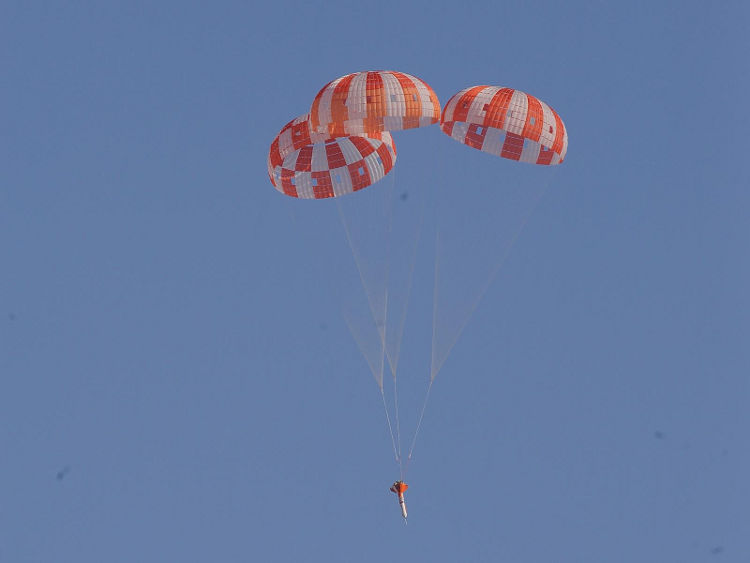
Officials at the American space agency announce that the Orion Multi-Purpose Crew Vehicle (MPCV) parachute system underwent another successful test on Tuesday, August 28. The assessment was meant to determine how the chutes would behave under maximum pressure levels.
One of the things that separate Orion from other spacecraft is that it will be able to ensure the safety of its astronaut crew upon returning from deep space missions. The parachute system will be extremely important for the vehicle.
Made up of several components, this system is among the most complex of its kind ever built. Over the past few months, it has been undergoing testing at the US Army's Yuma Proving Ground, in Arizona.
The test did not use the standard-shape Orion, but rather a dart-shaped test vehicle. The latter was dropped from aboard a C-130 aircraft, flying at an altitude of 25,000 feet (7,620 meters). Its drogue chutes were the first to deploy, at an altitude of around 20,000 feet (6,096 meters).
A series of small chutes were deployed next, followed promptly by the successful deployment of the three main parachutes. Each of these weighs in excess of 136 kilograms (300 pounds), and has a diameter of 35.3 meters (116 feet).
At this point, Orion's maiden flight, dubbed Exploration Flight Test 1, is scheduled to occur in 2014. Since the NASA Space Launch System (SLS) rocket will not be available until at least 2017, the capsule will first launch aboard a United Launch Alliance (ULA) Delta IV Heavy rocket.
“Each one of these tests helps us verify the parachute system for Orion is safe, efficient and robust. Today's test demonstrated the parachutes can deploy at the maximum velocity expected when returning from deep space,” Orion parachute assembly system project manager, Chris Johnson, explains.
Once the Orion and SLS successfully complete a series of joint tests, the system will be put to the ultimate test. Under the 2010 National Space Policy signed by US President Barack Obama, NASA needs to get to a near-Earth asteroid by 2025, and to put humans on Mars by the early 2030s.
MPCV is a stripped-down version of the original Orion capsule design, which was developed by NASA as part of the now-canceled, Moon-oriented Project Constellation.
Via: Orion Successfully Completes Another Parachute Test
Tidak ada komentar:
Posting Komentar